From waste to resource: the future of wastewater treatment
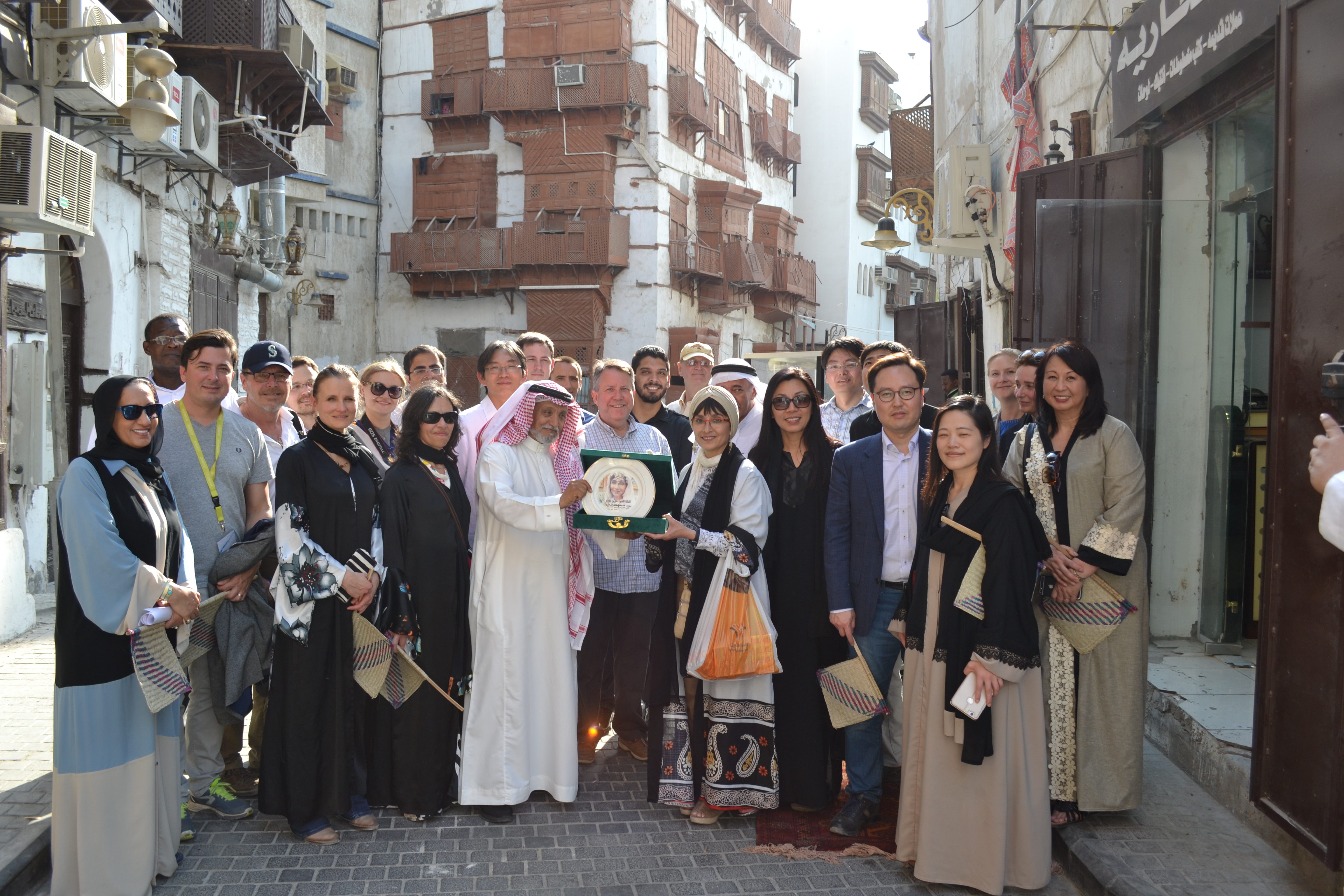
The KAUST Water Desalination and Reuse Center (WDRC) held the KAUST Research Conference: Changing Paradigms of Wastewater Treatment – From Waste to Resource from March 27 to 29 on the University’s campus.
The University’s Water Desalination and Reuse Center (WDRC) held the KAUST Research Conference: Changing Paradigms of Wastewater Treatment – From Waste to Resource from March 27 to 29 on the University’s campus, with the event focusing on recent developments in efficient and innovative technologies and microbes to recover resources such as water, nutrients and energy from wastewater in a safe and sustainable manner.
The KAUST Research Conference: Changing Paradigms of Wastewater Treatment – From Waste to Resource featured over 30 speakers from academia and global industry.
Featuring over 30 speakers from academia and global industry, the conference included presentation sessions and panel discussions that covered several key areas, including: energy efficient biotechnologies for nutrient removal from wastewater; innovative biotechnologies for the recovery of water, energy and nutrients from wastewater; harnessing the potential of microbes for synthesizing high-value added products from carbon dioxide and low-value waste streams; the characterization of microbes to better harness their potential in energy and nutrient removal; and the safety of reuse water, including the characterization of emerging contaminants and the role of wastewater treatment processes to reduce contaminants.
The value in wastewater
In his opening remarks, Pascal Saikaly, KAUST associate professor of environmental science and engineering and conference chair, stated, “There is a growing awareness that the current paradigms for wastewater treatment are no longer adequate to meet the demands of a rapidly growing human population and urbanization, the increase in water scarcity in many regions around the world and the need for a more sustainable society. We are now entering a new era in the water management cycle where we think of ‘used waters’ as a valuable resource for water, nutrients, energy and valuable materials such as bioplastics, alginate and metals.”
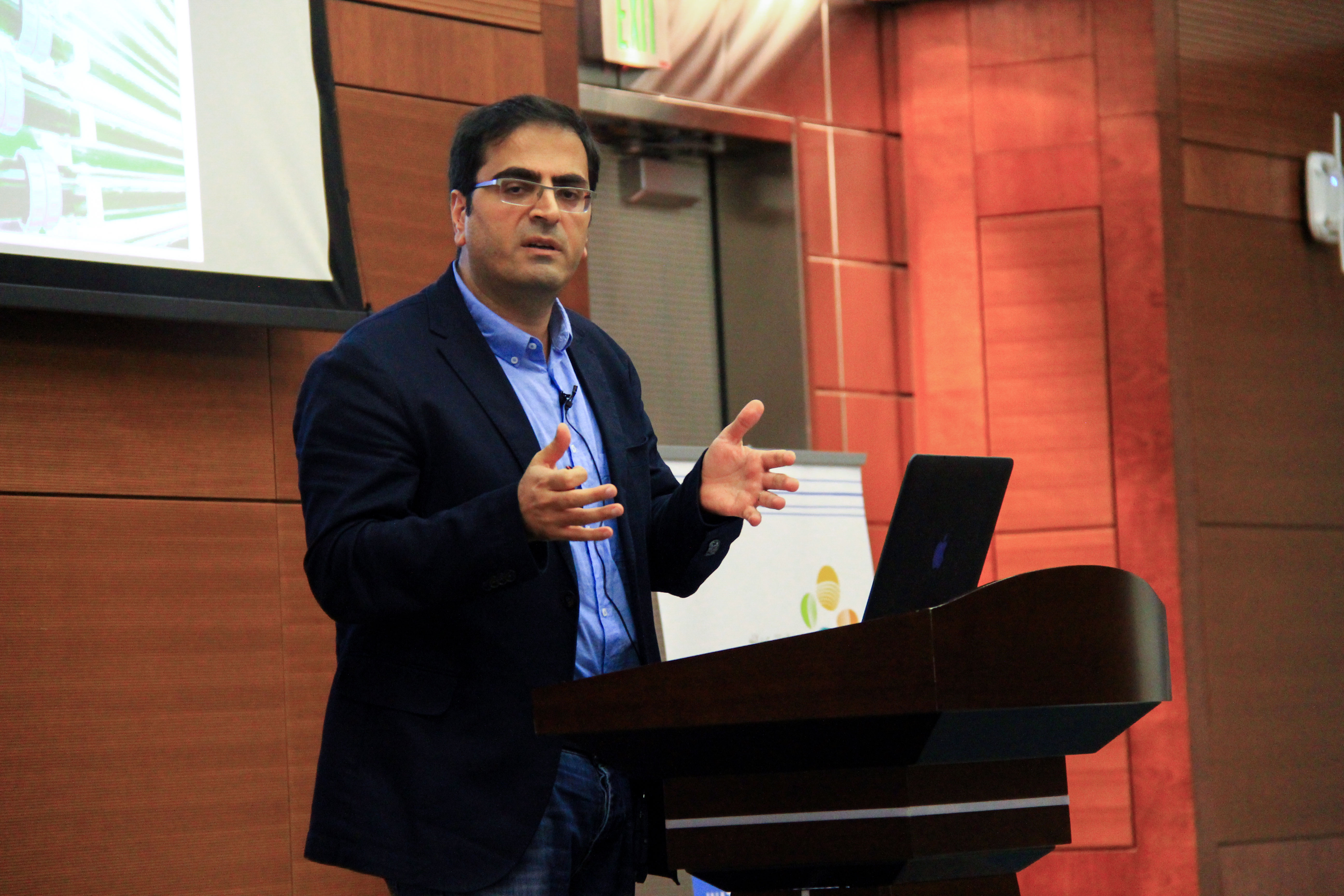
Pascal Saikaly, KAUST associate professor of environmental science and engineering, acted as chair of the KAUST Research Conference: Changing Paradigms of Wastewater Treatment – From Waste to Resource.
“Although wastewater treatment focuses on removing water pollutants, many of these pollutants are valuable resources if recovered in useful form,” noted keynote speaker Bruce Rittmann, professor and director of the Swette Center for Environmental Biotechnology at the Biodesign Institute at Arizona State University. “It is now possible to capture the energy value in ‘used waters,’ including domestic wastewater.”
Bruce Rittmann, director of the Swette Center for Environmental Biotechnology at the Biodesign Institute at Arizona State University, gave a keynote address at the Changing Paradigms of Wastewater Treatment conference.
Rittmann outlined the developments in anaerobic membrane bioreactors used to generate methane and microbial electrochemical technologies used to generate electrical power or hydrogen gas that make it possible to achieve energy-positive wastewater treatment.
“After recovery of the energy used from water, most of the nitrogen and phosphorous are released as inorganic forms that can be recovered for recycling to agriculture,” he said.
Keynote speaker Bruce Logan, professor of environmental engineering and director of the Engineering Energy & Environmental Institute at Penn State University, highlighted new developments in cathode material for scale up of microbial fuel cells (MFCs) in his talk, noting, “Cathode area per reactor volume is key design parameter for scale up of MFCs. A second process is needed when using MFCs to treat domestic wastewater.”
Logan also outlined recent developments in integrating MFCs with anaerobic fluidized bed membrane bioreactors for water and energy recovery from wastewater.
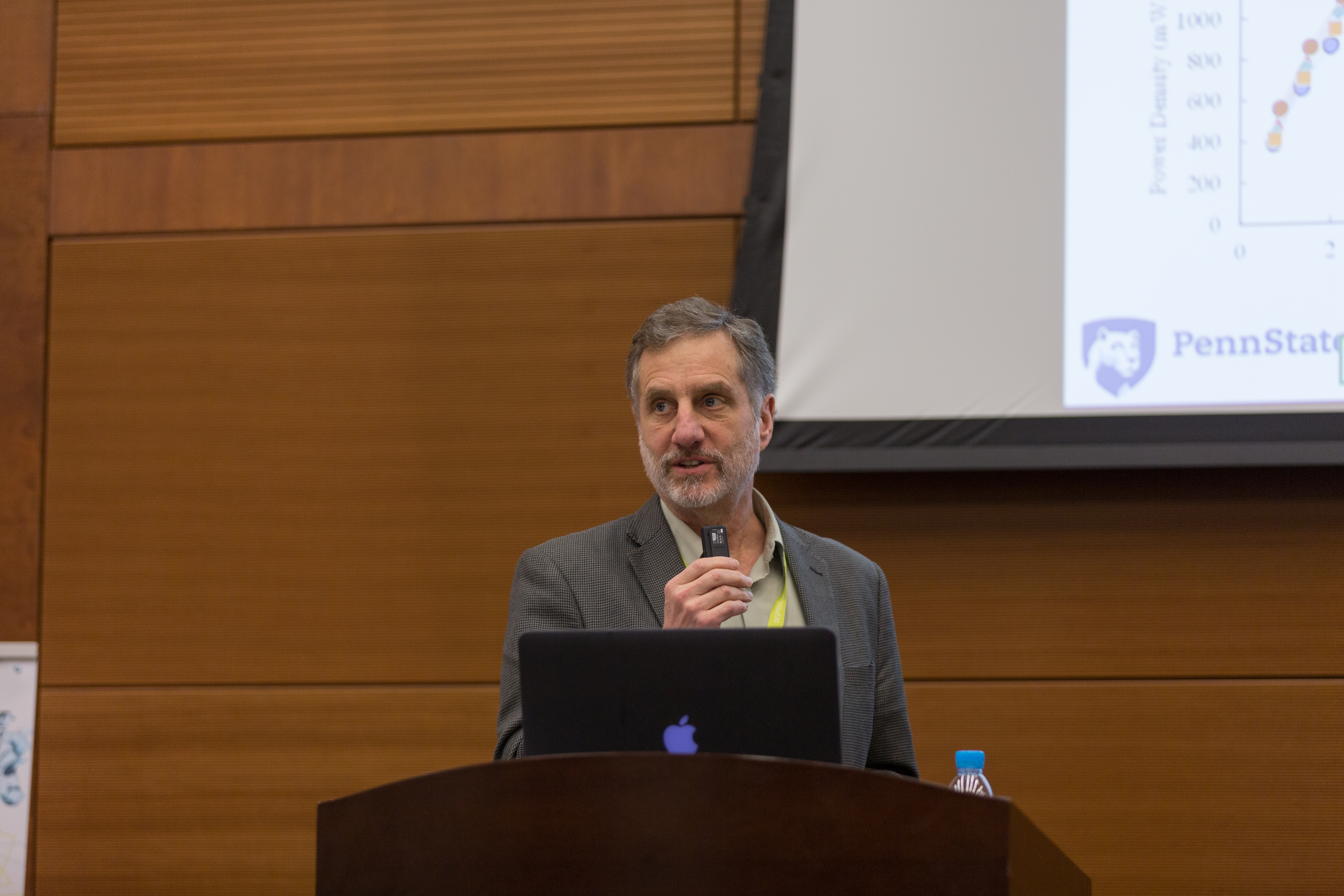
Bruce Logan, director of the Engineering Energy & Environmental Institute at Penn State University, highlighted new developments in cathode material for scale up of microbial fuel cells (MFCs) in his conference keynote talk.
Jeonghwan Kim, associate professor at the Sustainable, Environmental Membrane Technology (SEMT) Laboratory at Inha University in Korea, emphasized the need for achieving energy positive domestic wastewater treatment in Korea in his talk. Kim presented recent developments in anaerobic fluidized membrane bioreactors for energy recovery and fouling control at both fundamental and pilot-scale studies.
“Partial nitritation/anammox (PN/A) bioprocesses provide a critical opportunity for sustainable water resource recovery,” noted speaker George Wells, the Louis Berger Junior professor of civil and environmental engineering at Northwestern University. In his talk, Wells outlined the importance of aggregate architecture on partial nitritation/anammox process performance and stability.
“These are crucial for the development of novel operating and design strategies. Taken together, our results provide evidence of the feasibility of application of PN/A bioprocesses for direct mainstream nitrogen removal, but novel approaches to selectively enrich ammonia oxidizing bacteria and anammox bacteria are essential for the future scaling of mainstream partial nitritation/anammox,” he said.
A changing paradigm
“Wastewater treatment technologies are being driven towards a new paradigm due to severe water shortages due to droughts, changing climate conditions, rapid increases in energy costs and ongoing environmental challenges, with trends emerging towards a major transition,” said conference keynote speaker Jurg Keller, the director of the Advanced Water Management Centre at the University of Queensland.
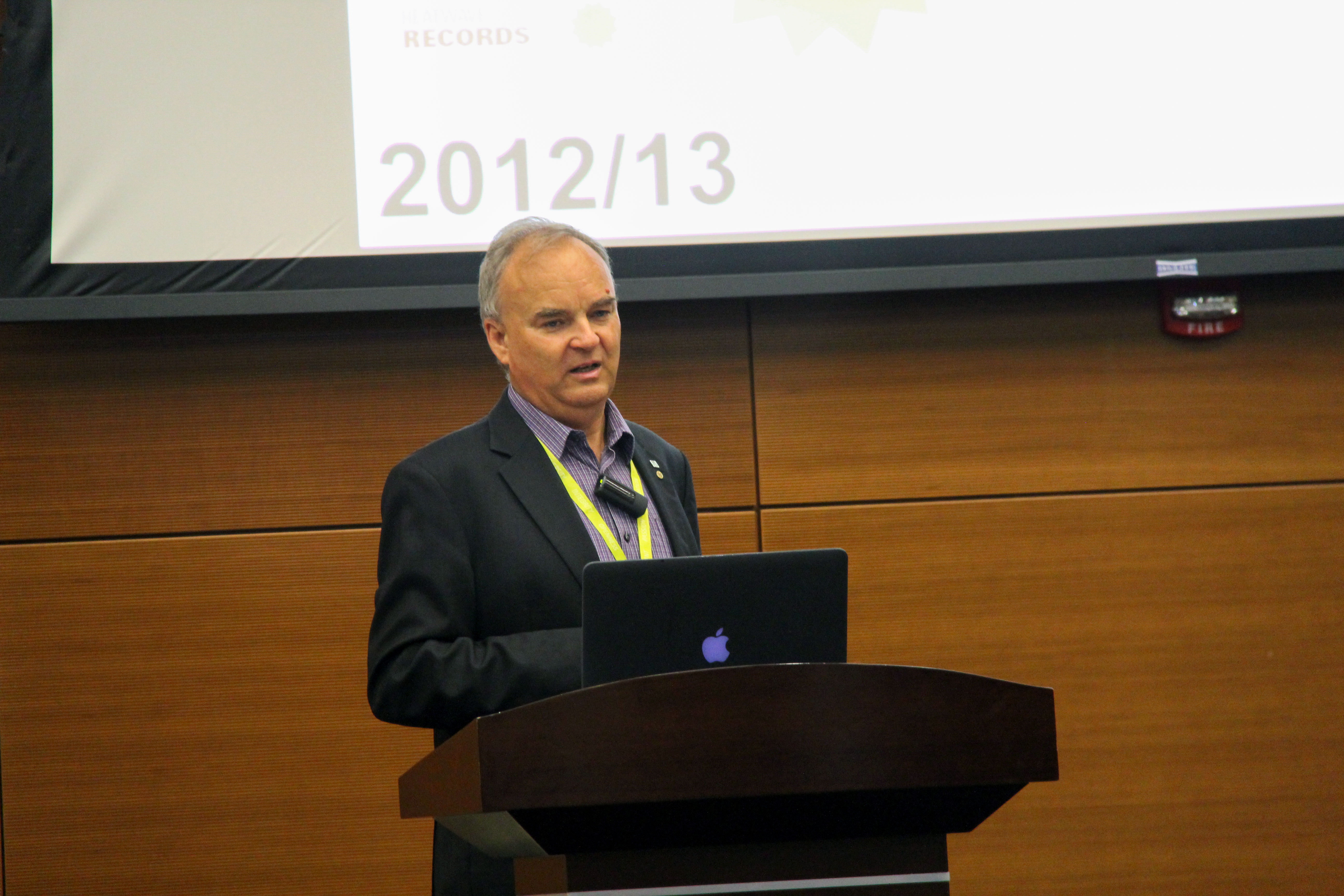
Jurg Keller, the director of the Advanced Water Management Centre at the University of Queensland, gave a keynote address during the Changing Paradigms of Wastewater Treatment conference.
Keller presented some of the key urban water management transitions underway in Australia that are influencing and reflecting global trends for wastewater treatment.
“We need to create ‘water-sensitive cities’ where cities of the future are sustainable, productive, resilient and livable, but different cities have different visions and needs,” he said. “However, all cities need safe water supplies.”
The future of microalgae
Ana Otero, associate professor at the University of Santiago de Compostela, discussed microalgal biotechnology used for wastewater treatment in her conference presentation. This technology has experienced major growth in the last decade due to an increased interest in microalgae.
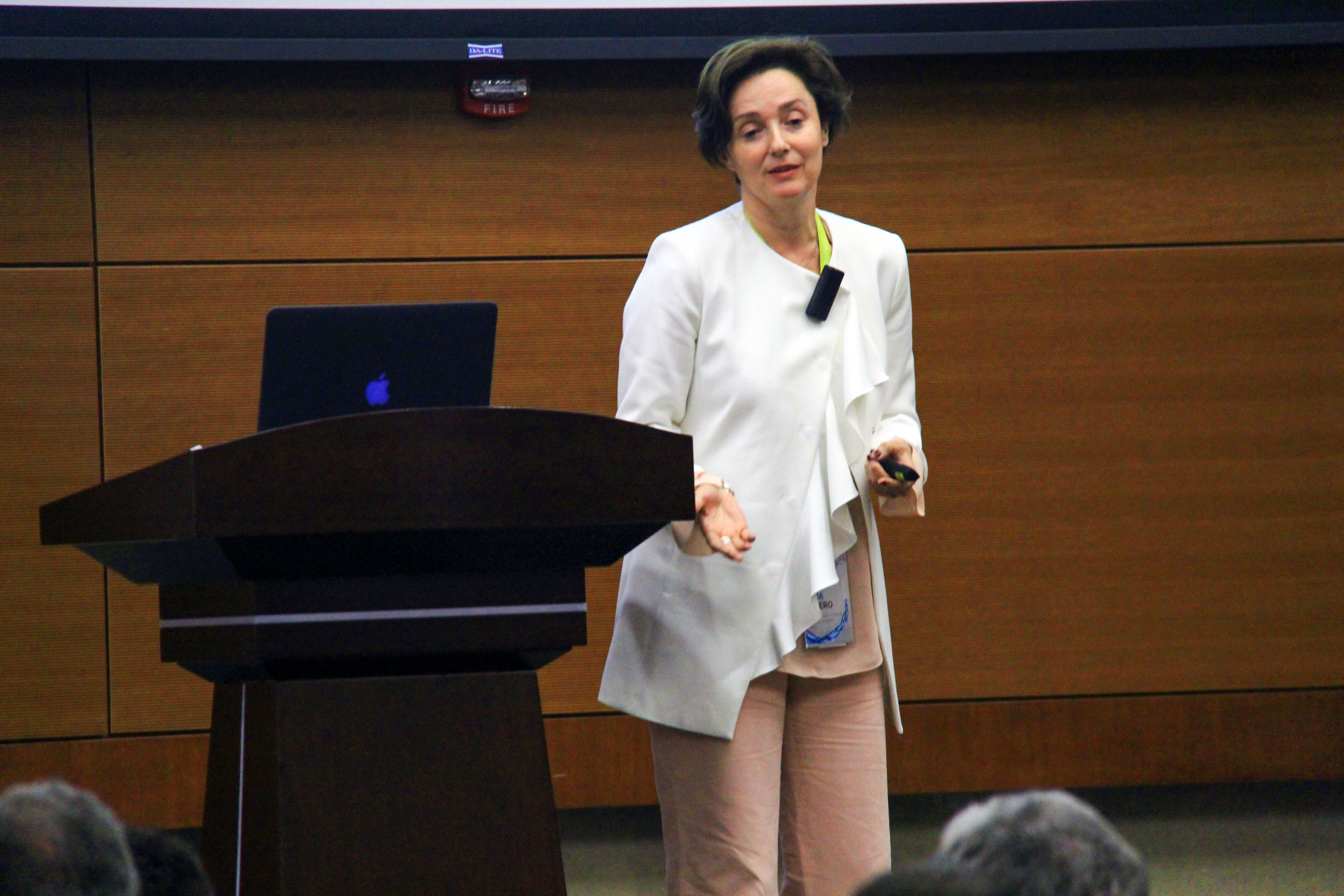
Ana Otero, associate professor at the University of Santiago de Compostela, discussed microalgal biotechnology used for wastewater treatment in her WDRC conference presentation.
Otero noted, “Microalgae are now being integrated into the wastewater treatment process as part of the microalgal biorefinery concept. Preliminary results from studies demonstrate the efficacy and versatility of microalgae-based nutrient filtering units to provide tailored solutions for specific industrial effluents. However, further studies must be carried out to fully assess the feasibility of this application.”
Jeremy Guest, an assistant professor from the University of Illinois at Urbana-Champaign, outlined the use of microalgal bioprocesses for nutrient recovery from wastewater in his talk.
“Microalgal treatment systems could significantly advance nutrient recovery from wastewater, but the successful implementation of algae for nutrient recovery requires intensification of algal unit processes and a mechanistic understanding of how engineering design and operational decisions influence treatment system performance and reliability,” he said. “We need to embrace these microalgal technologies, and we hope they will take off soon.”
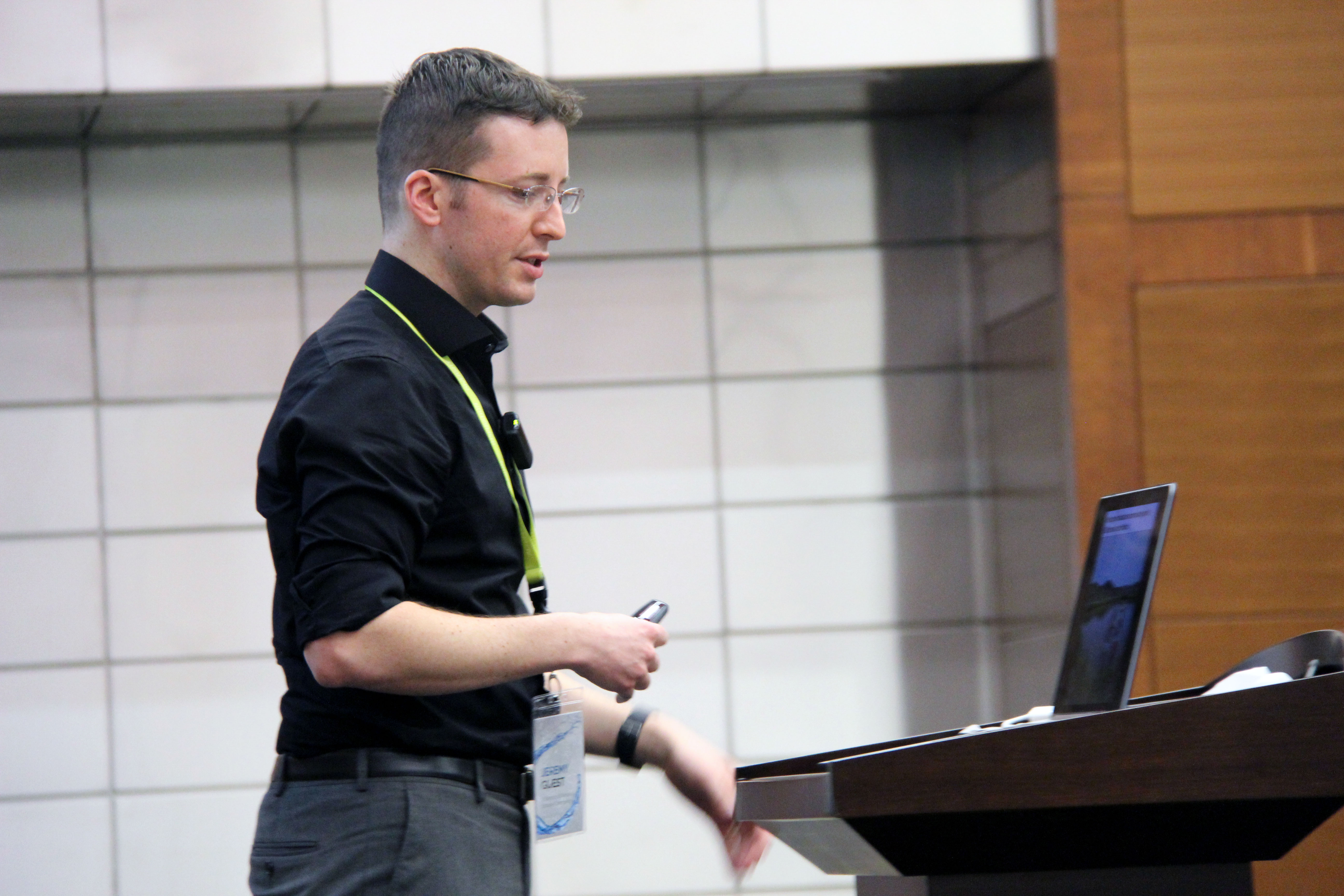
Jeremy Guest, an assistant professor from the University of Illinois at Urbana-Champaign, outlined the use of microalgal bioprocesses for nutrient recovery from wastewater in his conference talk.
Insights to better harness the potential of microbes
Wen-Tso Liu, professor at the University of Illinois Urbana-Champaign and a conference keynote speaker, presented recent developments in the anaerobic digester microbiome.
Wen-Tso Liu, professor at the University of Illinois Urbana-Champaign, presented recent developments in the anaerobic digester microbiome in his WDRC conference presentation.
“Understanding the anaerobic digester microbiome is the basis to optimize efforts in water and bioenergy recovery,” he said. “Operation conditions are key factors driving the anaerobic digester microbiome, and combining mass balance with high-throughput sequencing provides a unique approach to better design and optimize the process.”
Daniel Bond, an associate professor at the University of Minnesota Twin Cities, provided new insights on the importance of inner and outer membrane cytochromes for higher current production in Geobacter through the use of genome editing and high-resolution secondary ion mass spectrometry (NanoSIMS) in his talk.
Conference speaker Assistant Professor Orianna Bretschger from the J. Craig Venter Institute outlined the application of various “omic” approaches to understand extracellular electron transfer pathways/genes to and from electrodes in electrogeneic microbial communities present in bioelectrochemical systems.
In his talk, Dr. Mads Albertsen, group leader for the Center for Microbial Communities at Aalborg University (Denmark), said, “Using genome-centric metagenomics, we can now revisit the conventional wisdom and accepted facts and we can discover novel organisms of key importance in biological wastewater treatment. Today, we are retrieving genomes from metagenomes at an increasing pace and continue to uncover new and surprising physiologies—for example, Comammox Nitrospira, which are capable of complete ammonia oxidation.”
Averting the next public health crisis
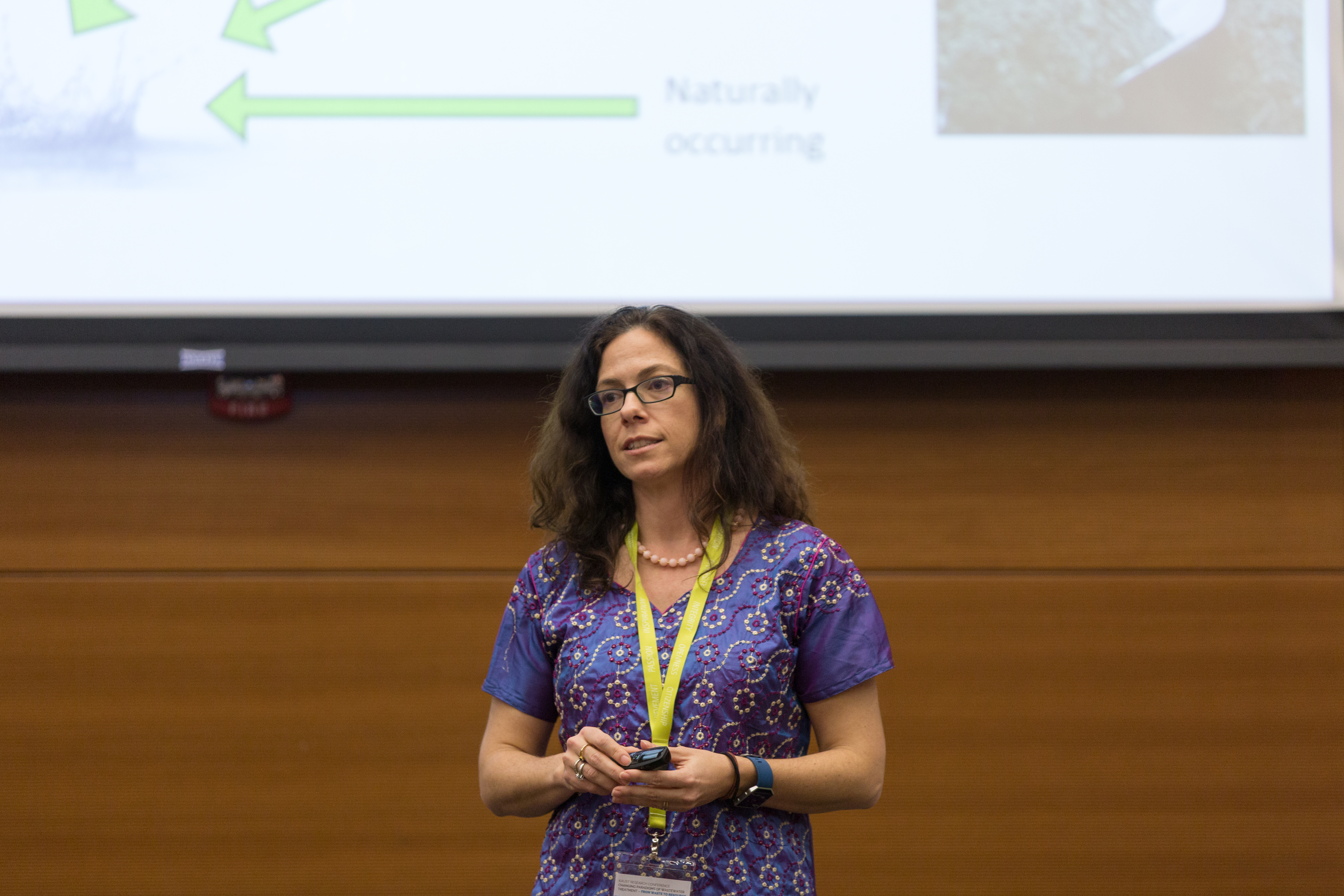
Amy Pruden, a professor at Virginia Tech, discussed the public health component of wastewater treatment in her WDRC conference talk.
Keynote speaker Amy Pruden, a professor at Virginia Tech, highlighted the fact that wastewater is a source of antibiotic-resistant bacteria and antibiotic resistance genes. Improper treatment and discharge of wastewater can result in dissemination of these emerging contaminants into the environment.
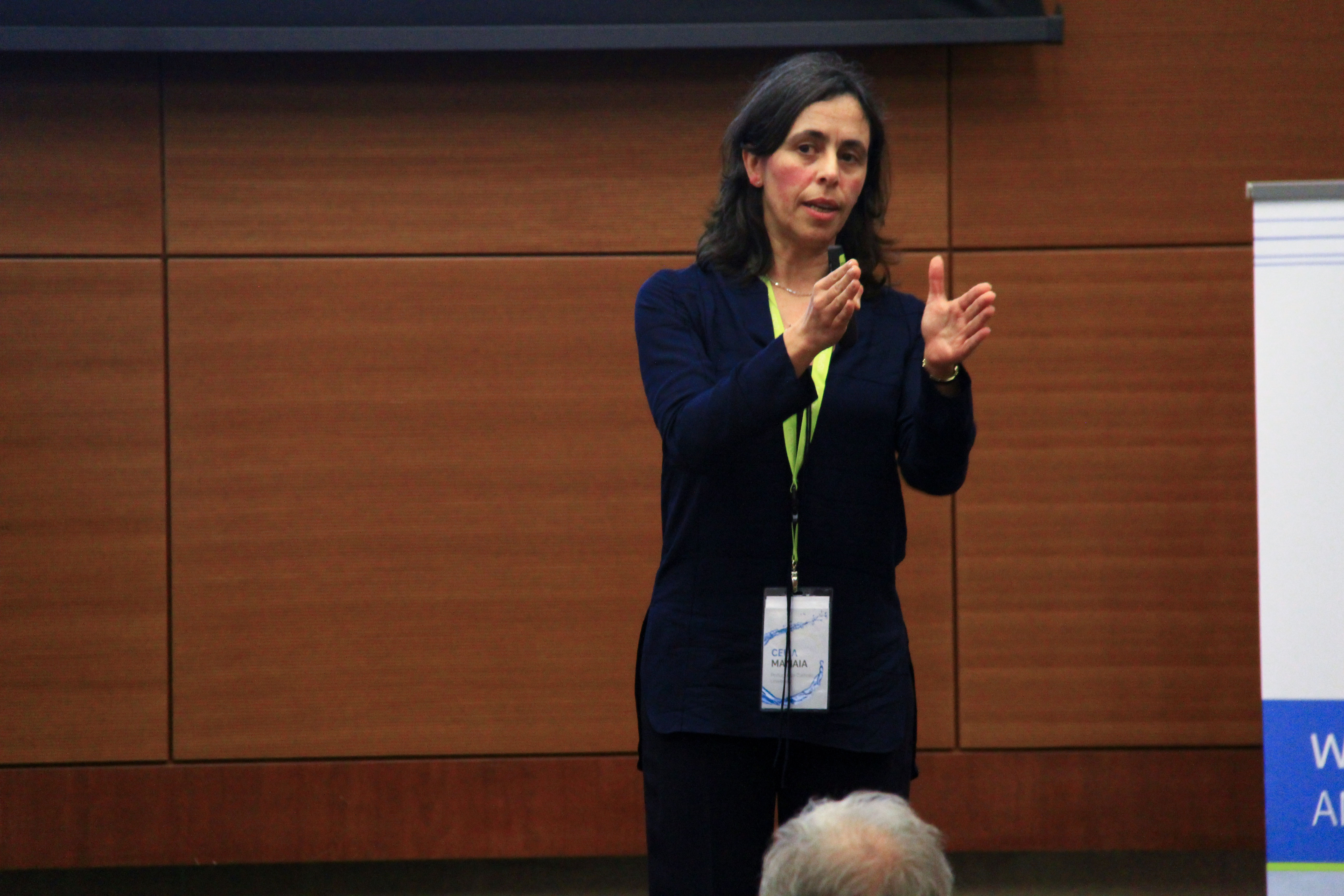
Celia Manaia, an assistant professor at the Portuguese Catholic University, discussed antibiotic resistance in her conference presentation.
This message was further reiterated by Celia Manaia, an assistant professor at the Portuguese Catholic University. She noted in her presentation that “antibiotic resistance is considered a major threat to human and animal health worldwide. Environmental reservoirs and human practices are potential enhancers for the propagation of antibiotic resistant bacteria and genes (ARB&ARG). To reduce the risks associated with ARB&ARG in wastewater discharge and reuse, further investigation, policy implantation and the development of technical solutions are required.”
Timothy Julian, leader of the pathogens and human health research group from Eawag (Switzerland), and KAUST Assistant Professor Peiying Hong, who was also conference co-chair, also presented low-cost technologies that can be used to treat wastewater and mitigate the associated risks arising from emerging contaminants.
Poster prize competition
Hong announced the winners of the conference’s poster prize competition, which featured three Ph.D. student winners from KAUST: Hong Cheng (first prize); David Mantilla Calderon (second prize); and Dario Rangel Shaw (third prize).
The WDRC conference featured a poster session and competition; winners of the competition were KAUST Ph.D. students Hong Cheng (first prize); David Mantilla Calderon (second prize); and Dario Rangel Shaw (third prize).
In his closing remarks, Saikaly summarized the highlights of the conference and noted, “There is not necessarily one solution, and we should continue to think about niche-specific applications for next-generation biological wastewater treatment technologies.”
Related stories:
- Hybrid desalination pilot plant being built at KAUST
- Desalination project wins global innovation challenge
- Against the flow of drug resistance
- By Caitlin Clark and Pascal Saikaly, KAUST News

